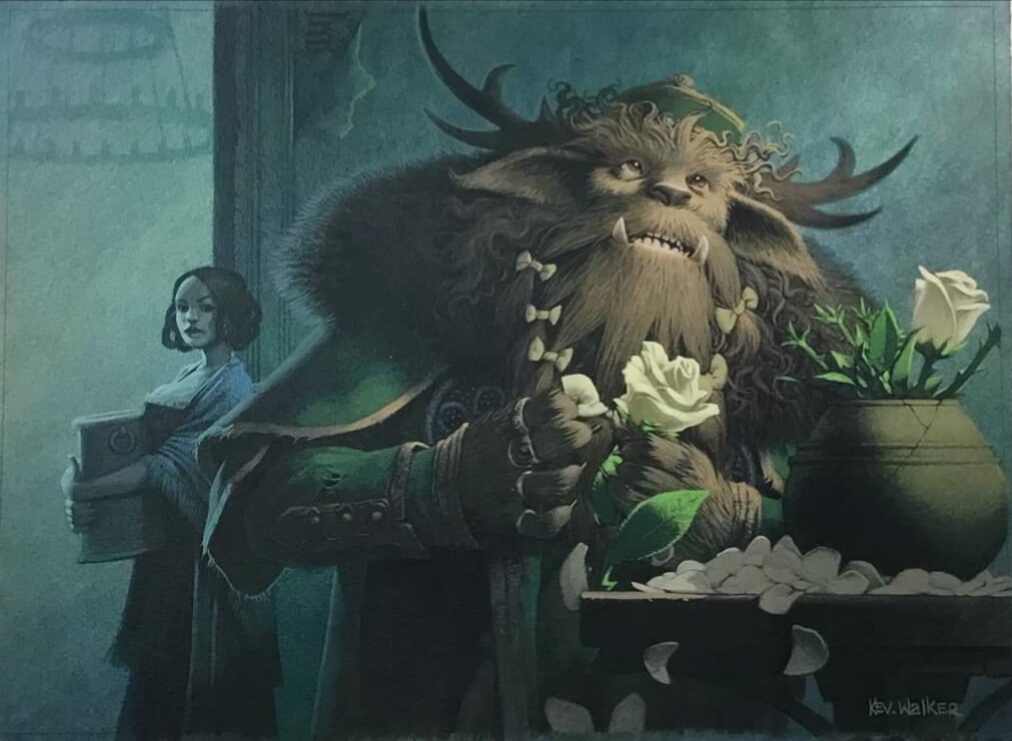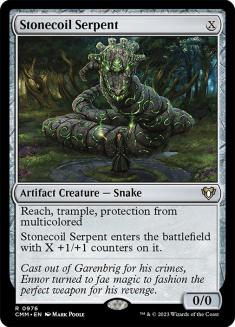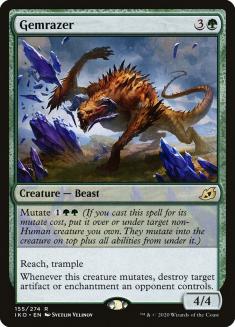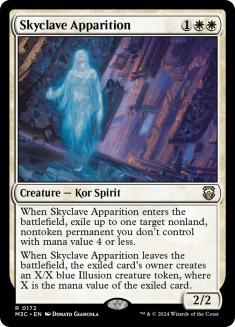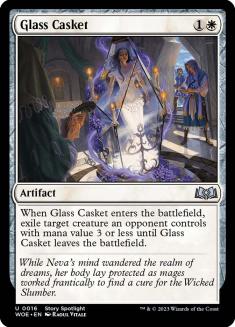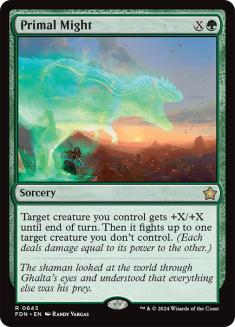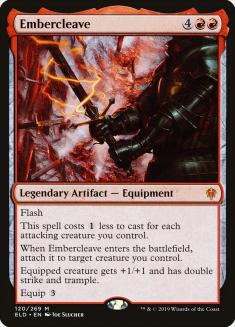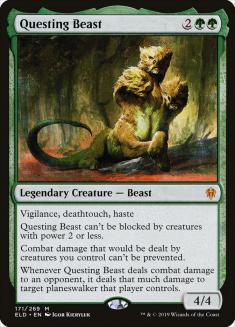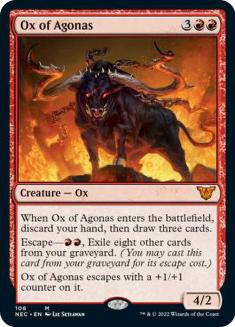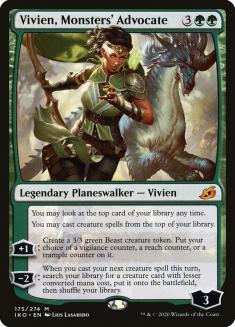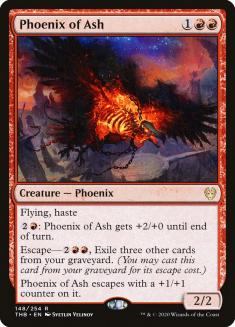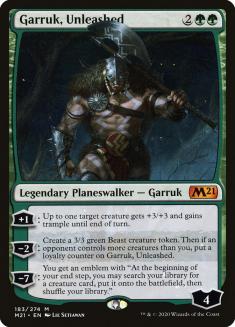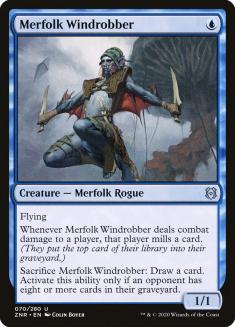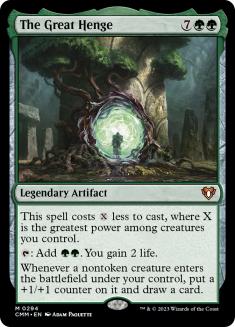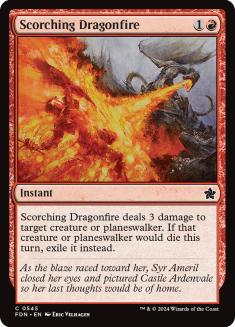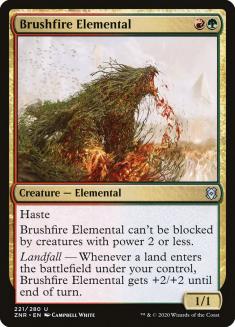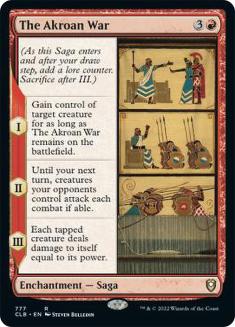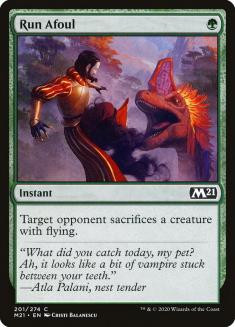So, you’re telling me that Gruul Adventures is the best deck again? Going from playing Gruul Adventures at the 2020 Season Grand Finals, to registering a deck that couldn’t beat Gruul Adventures, to watching Gruul Adventures crush the first Zendikar Rising League Weekend. Forgive me for needing a second to recover from that whiplash.

Between the aforementioned split play and a handful of other events around the internet, Gruul Adventures was a strong contender for best performing deck on the weekend, and it’s easy to see why.
Two weekends ago, we saw the meteoric rise of Clan Yorion — infinite grindy decks that began an arms race to outsize one another. Whether the fight was about Dream Trawler, Ugin, or something else, the cards that these decks were fighting each other with were largely going to take a few turns of development. Sound familiar?
These conditions are similar to the Omnath, Locus of Creation / Lucky Clover race to the moon that defined early Zendikar Rising Standard. Gruul Adventures is the aggro deck in the format that’s the best at punishing people for not committing enough to handling the battlefield early. Gruul Adventures pilots everywhere are succeeding with the formula even weeks after it became a known quantity.
Creatures (25)
- 3 Scavenging Ooze
- 4 Lovestruck Beast
- 2 Questing Beast
- 4 Edgewall Innkeeper
- 4 Bonecrusher Giant
- 4 Brushfire Elemental
- 4 Kazandu Mammoth
Lands (22)
Spells (13)

I’ve already covered a lot of what goes into building the base-level Gruul Adventures deck, but there have been a few shifts in the time since.
The largest difference in current lists is the departure from the Stonecoil Serpent / Gemrazer package. Gemrazer’s pretty easy to solve for: if it isn’t hitting an artifact or enchantment on the opponent’s side of the battlefield, it’s a glorified Moldervine Cloak at best, and it goes down from there.
Stonecoil Serpent is a bit more controversial, what with it still seeing consistent play in Mono-Green Aggro decks. Ever taken a look at what flavors of removal the Yorion decks are playing? It starts with three or four copies of each of these cards:
Ignoring the fact that a ton of Stonecoil Serpent’s upside was rolled in with Gemrazer, Skyclave Apparition and Glass Casket made it an even tougher pill to swallow. If the goal of the deck is to commit to the battlefield during the opponent’s developmental stages, opening oneself up to clean two-for-ones is an easy way to fall behind.
The fact that Stonecoil Serpent doesn’t leave anything behind when the aforementioned white cards leave the battlefield created a couple of huge gameplay dynamics: Stomp didn’t do much to insulate against Skyclave Apparition, and Yorion itself was a bomb in a matchup where its efficacy was meant to be reduced.
Lucky Clover being gone translates to fewer Bonecrusher Giants floating around. In turn, that means that it’s easier to put a bit more stock in two-drops, and Questing Beast is more free than it’s been in months.
Changing some number of Primal Might over to Scorching Dragonfire is a symptom of the fact that decks are leaning more interactive these days and the creatures that removal is going after are smaller. This is part of what makes Questing Beast more attractive and not demanding the risk of a one-for-two means that Scorching Dragonfire is largely a more mana-efficient version of a similar effect in a safer package.
The Sideboard
Sideboarding with the deck, and the associated card choices, come down to what the actual plans in various matchups are and what ends up being important in the games. It sounds obvious, but it helps deduce why cards like Chainweb Aracnir aren’t making the cut, but there are other creatures with escape and Run Afouls. This is a symptom of Chainweb Aracnir itself not being particularly good at any of its roles, despite sounding good on paper.
VS Dimir Rogues
Out:
In:
Continuing on the point about Chainweb Aracnir not being in the deck, note that Run Afoul isn’t being sideboarded in against Dimir Rogues, despite the knee-jerk reaction being that it seems like a natural fit. There are two problems.
Lists that play Merfolk Windrobber are going to be sideboarding the card out immediately against Gruul Adventures. The card’s body doesn’t line up well against almost anything and it automatically dies if there are Chainweb Aracnirs present.
Another point on why it’s sideboarded out is that Dimir Rogues is looking to be the control in this matchup. Dimir Rogues pilots are frequently sideboarding out their spare creatures and leaning into being a full-on Dimir Control deck, with Into the Story to supplement a pile of one-for-one interaction.
This creates a dynamic where Gruul Adventures needs to have it cards lean into an aggressive posture or contribute to grinding through this sort of plan. Ox of Agonas and Phoenix of Ash are going to be better at applying pressure and are better at being part of double-spell turns against a deck that’s trying to capitalize on mana advantages. Ox of Agonas in particular being less mana and a larger number of cards out of the graveyard is a better counter to Dimir Rogues than Chainweb Aracnir, despite the reasons not being as bold-faced.
One of the biggest things that’s going to stick out is the fact that all of the Embercleaves are benched here. That’s because Gruul can frequently outgrind a Dimir opponent on the back of The Great Henge and Vivien. It’s possible that the first Embercleave is better than the Garruk, Unleashed (for the sake of keepin’ ’em honest). But more frequently than not, the games that Gruul loses to Dimir are the games where the deck doesn’t get to curve, or has too many payoffs without enough enablers.
That’s to say too many cards that require a battlefield presence against a control deck can lead to unplayable hands, which translates to games being lost. The Great Henge has more upside in grindy matchups, and gets the nod here as a result. Whenever bringing in a bunch of big, expensive spells, something has to give, and it’s going to be better to choose the aggro package of Questing Beast and Embercleave or the grindy package of Vivien and The Great Henge.
It’s a bold-faced example of sideboarding simply being an exercise in rebuilding a deck to be the best version of itself for a given matchup.
VS Gruul Adventures
Out:
In:
This is a matchup dictated by swampy battlefields and how to break through them. Removal is sound in theory, but a conditional card like Scorching Dragonfire is so rarely answering the scariest creature on the battlefield that it isn’t worth a lot. The fact that Brushfire Elemental gets blocked by everything and dies to almost everything also makes it a tough sell in the deck.
This is the kind of matchup where the fourth Embercleave is a necessity. Specifically, matchups where the opponent isn’t doing very much to try and interact, and having a single power-card to build towards is going to be worth a ton. That’s not even getting into the fact that it makes it almost impossible for the opponent to “win” combat.
The Akroan War plays to the “break a battlefield stall by force” theory of Gruul, but this isn’t the only place it’s good. Decks that are frequently putting all of their eggs into one- or two creature-baskets are easily punished by The Akroan War, and the card is a super-Act of Treason there. It has incredible use against Elder Gargaroth, Terror of the Peaks, and some off-the-wall decks that feature things like Korvold, Fae-Cursed King.
If the mirror opponent seems to be very high on removal – think multiple copies of Primal Might and Thundering Rebuke – bringing in a couple of copies of Vivien, Monsters’ Advocate is reasonable. It’s going to be harder to set up big Embercleave turns or game-winning The Akroan War sequences when the opponent is consistently reducing the total number of game pieces on the battlefield. Having a constant resource engine is a way to overwhelm that plan.
VS Azorius Blink (Yorion)
Out:
In:
The cuts are somewhat straightforward. Scorching Dragonfire doesn’t have a ton of relevant targets, and Scavenging Ooze doesn’t actually end up with that much to scavenge against their removal suite. The cards coming in are cards that lean grindy and play well against Glass Casket.
What ends up being interesting in the matchup is the card Run Afoul. It has a ton of play against the versions of the deck that are all-in on Dream Trawler, or simply play several copies of it. The fact that it can simply check copies of Yorion itself means the first copy of the card is almost never dead. The third copy only comes in against the Jeskai Lukka variants that are trying to spam as many copies of Dream Trawler as they can.
In a case like that, Run Afoul isn’t being used as a tradition removal spell, but in a way that’s more akin to a specific hate card against an archetype; think Grafdigger’s Cage.
Going on an Adventure
All the pieces of the puzzle are components that play towards having a functional deck to present in any given matchup. Most sideboarding with a midrange-slanted aggro deck like this is going to be with the curve in mind. The times that it isn’t, it’s actively shifting its curve to compensate for the fact that the deck needs to be better at operating in a different part of the game, like against Azorius Blink decks. The two-drops are largely gutted in that deck because Glass Casket and Skyclave Apparition are so good at checking those resources.
Figuring out what portion of the game you’re trying to capitalize on frequently entails looking at what the opponent is the best at doing and trying to build your deck to not play into that strength. This is the best way to find the pocket to best take advantage of a moment of weakness and slam the door shut with a card like Embercleave.
It’s no wonder that Gruul is the best Embercleave deck in the format.

